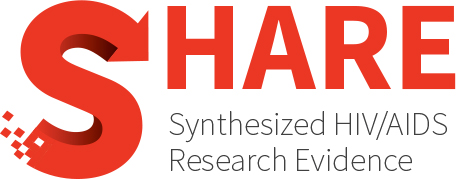Category Archives: Governance arrangements
How decisions about care are made
Estimating the effect of maternal viral load on perinatal and postnatal HIV transmission: A systematic review and meta-analysis
Background Although a growing body of evidence supports zero risk of sexual HIV transmission from a person with sustained virological suppression, known as U=U (undetectable equals untransmittable), data have been...
Machine learning for personalized risk assessment of HIV, syphilis, gonorrhoea and chlamydia: A systematic review and meta-analysis
Background Machine learning (ML) shows promise for sexually transmitted infection (STI) risk prediction, but systematic evidence of its effectiveness remains fragmented. Methods We systematically searched six electronic databases, three preprint...
HIV, hepatitis, and syphilis self-testing among adolescents and young adults: A systematic review and meta-analysis
Background: Adolescents and young adults (AYA) make up a significant share of the world’s burden of HIV and other sexually transmitted infections (STI). Self-testing can increase testing coverage and strengthen the...
Retention in HIV care among Southeast Asian people living with HIV: A systematic review and meta-analysis
Background Despite the effectiveness of antiretroviral therapy (ART) in reducing HIV-related morbidity and mortality, the retention of HIV care remains suboptimal in Southeast Asia. Objective This systematic review and meta-analysis...
Improving communication: A narrative synthesis of interventions for HIV disclosure to pediatric populations
PURPOSE OF REVIEW: HIV remains a significant global public health concern, affecting millions worldwide, including children. Disclosure of HIV status to infected children holds several benefits, yet rates of disclosure...
Health-related stigma among Indigenous peoples in Canada: A scoping review
BACKGROUND: Indigenous communities in Canada are disproportionately affected by health conditions linked to stigma, warranting the attention of researchers seeking to understand this culturally-determined phenomenon. This study explores the scope...
Health service utilization of Black immigrant women residing in the United States: A systematic review
Black immigrants constitute a rapidly growing population group in the U.S. A comprehensive understanding of health services used by Black immigrant women is necessary to support the complex needs of...
Aging and HIV: Recent findings in contributing factors
Background: Aging among people living with HIV (PLWH) presents multifaceted challenges influenced by antiretroviral therapy (ART), chronic inflammation, viral coinfections, stigma, multimorbidity, and immunosuppression. Methods: This review synthesizes recent research...
